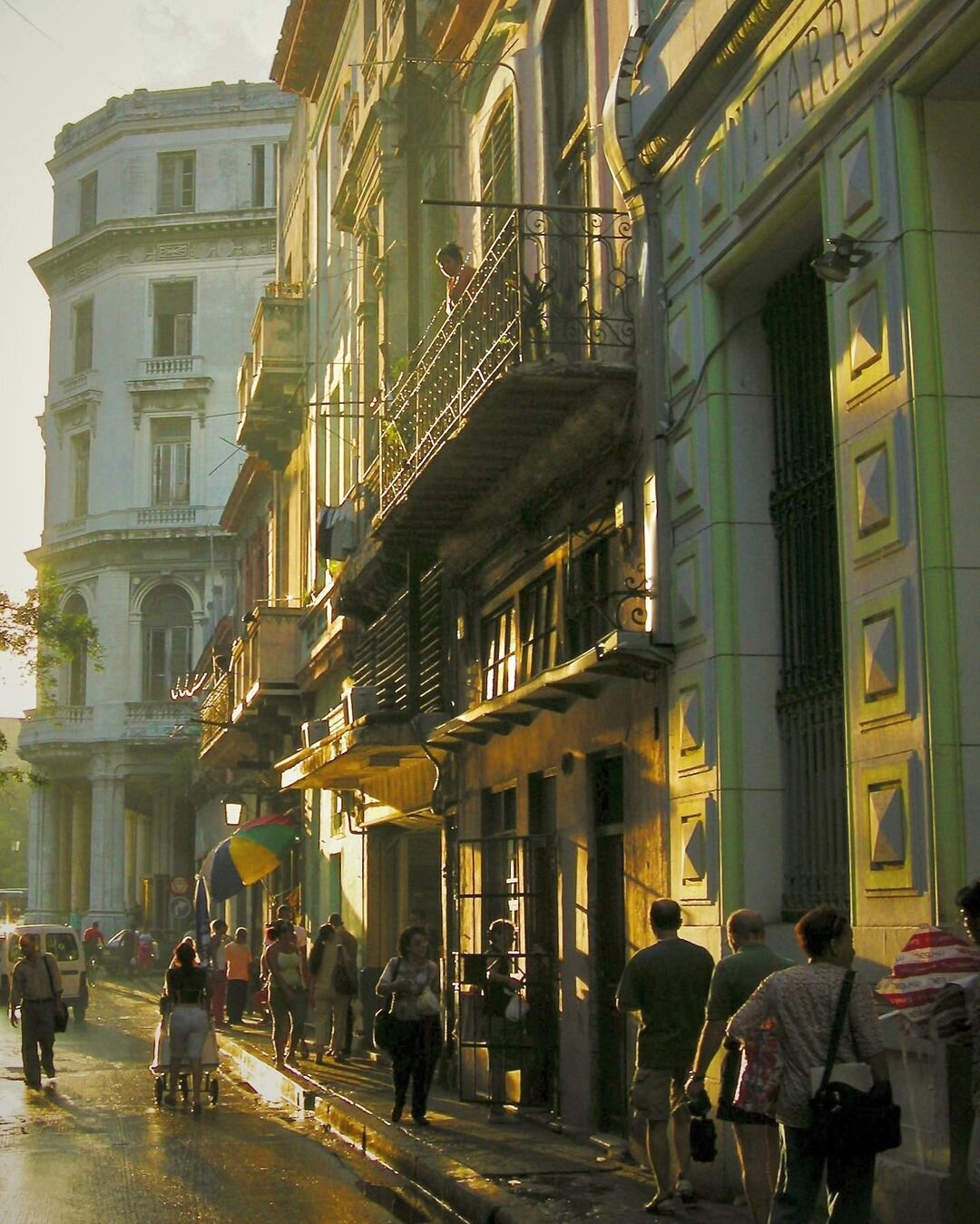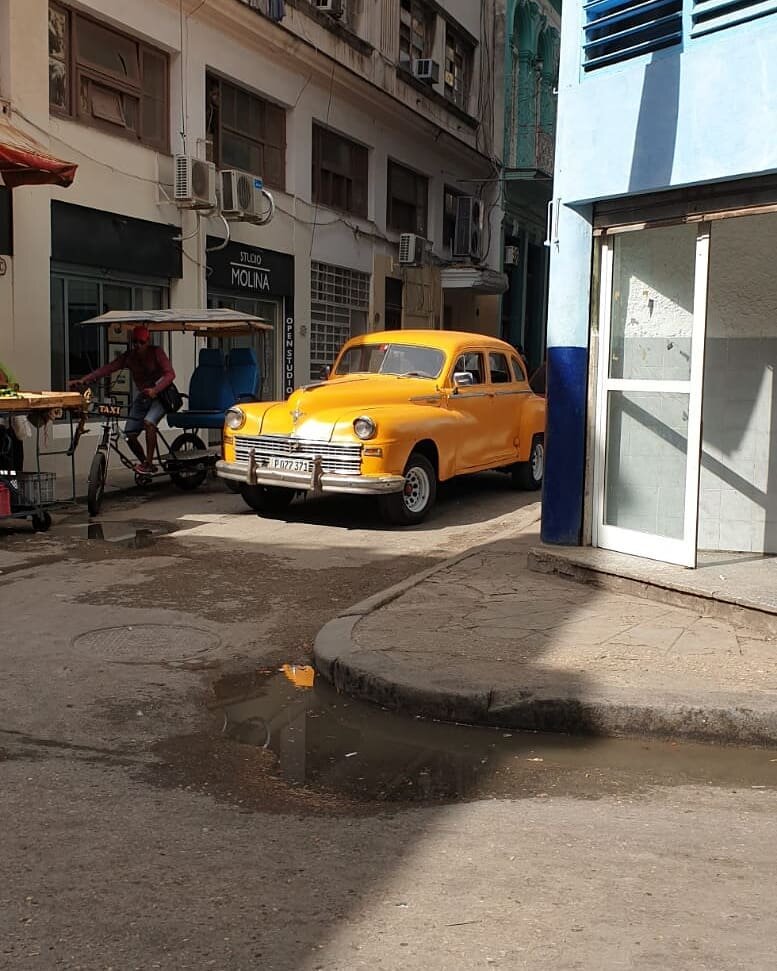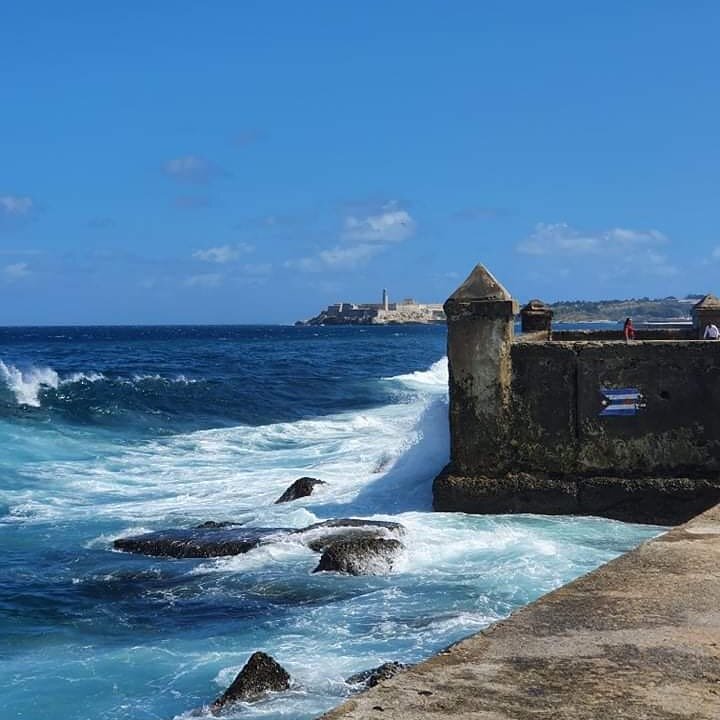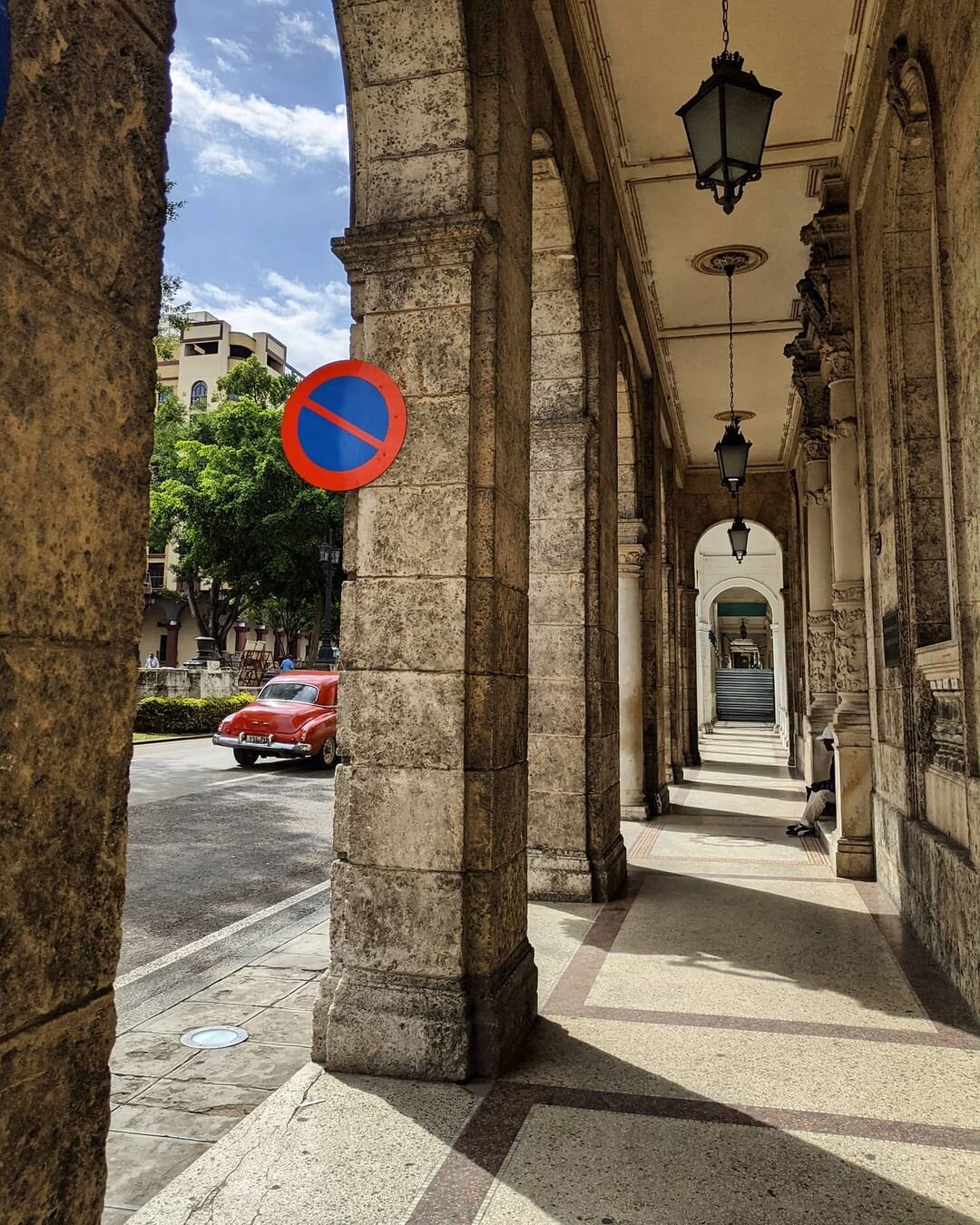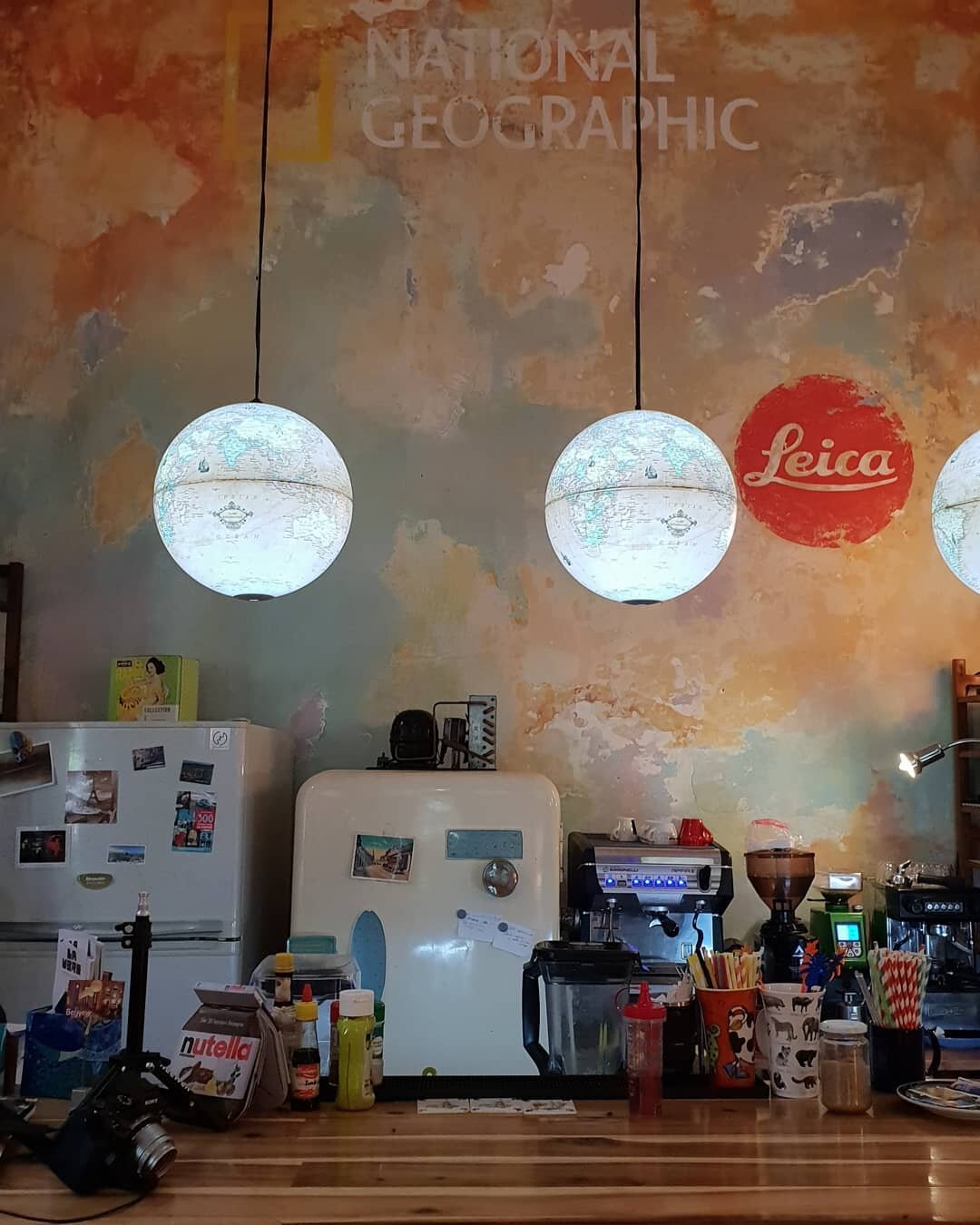
Havana, Cuba
I think many visitors expect to see the island as a time capsule or a journey back into time. Many are enamored by the cars and think people are out on the street dancing. Although you do see lots of old cars and hear lots of music, I think some people don't expect the scarcity of food and basic items you see throughout the country. Most visitors are used to going to getting what they want on the menu or going to a store with everything they need or want. That isn’t the case in Cuba.
When I think of Havana, I think of endless magic. Theres a spirit about the city that leaves you questioning and wanting more. Seeing how beautifully resourceful and curated the people are, hearing the children play on the street, the music from the homes, and the way Cubans always find ways past the obstacles gives its vibe. Its magically nostalgic.

Know Before You Go
Dueling Currencies
Cuba is a rarity in that there are two official currencies on the island. The first is the Cuban peso (CUP), in which state workers are paid. The second is the Cuban convertible peso (CUC) which is used by tourists and those locals that have access to it. Make sure you familiarize yourself with the coins and notes so you don’t get ripped off; one CUC is worth around 25 CUP. Whatever you do, make sure to bring plenty of cash with you if you’re traveling from the US, as American credit cards can be difficult to use.
Skip the Hotels
Valuable not just for the opportunity they’ll give you to experience authentic Cuban living, Airbnbs are the way to go in Havana. In fact, the main accommodation option is a kind of B&B known as a “casa particular.” Those that have a spare room are allowed to rent it out if they meet certain standards imposed by the government, and staying in Airbnbs also means you won’t experience any issues with using your American money to pay.
Pack Wisely
Travelers to most countries can reasonably expect to be able to buy anything that they forget to pack on arrival. This is not the case in Cuba, where everyday essentials such as toothpaste and shampoo can be hard to get hold of. You’ve been warned!
About Those Cars…
If you thought that the photos were only taken for postcards, you’re wrong. The trade embargo means that new cars have been incredibly difficult to get in Havana, and most vehicles are old and patched up. You’ll see old ‘50s American cars, Soviet cars from the ‘70s and ‘80s, and a few more modern ones imported in recent years.
The Malecon
On the map it looks like a busy road facing the sea, but the Malecon is incredibly important to Havana locals. Every night of the week it is busy with fishermen, dating couples, and groups of friends who gather to share a bottle of rum by the sea. Don’t miss out on some of the best people watching in Cuba.
Communism = No Ads
Being a Communist country, one thing that might be shocking is the lack of visual contamination from advertising in Cuba. You might see the occasional government billboard, but it’s a rarity even in Havana. In fact it’s quite a refreshing break from the bombardment of adverts in most countries.
Can’t-Miss Neighborhoods
El Prado
The newest part of Old Havana, Prado extends along Paseo del Prado Street, which features buildings from the first half of the 20th century. At this point, Old Havana turns into Centro Habana and signs of normal Cuban life become visible: more traffic, more households, and more of the establishments that make regular life possible—agromercados (farmer’s markets), parking lots, bus stops, and supermarkets.
El Vedado
El Vedado begins along 23rd street immediately after La Rampa. Most of its urban design, with beautiful houses and apartment buildings distributed in a grid formed by ample streets and 6.2-mile-long (100-meter) blocks, date back to the first half of the 20th century. It’s a great place to rent a casa particular. Explore local sights—including the gorgeous Colon Cemetery—during the day on foot, and spend nights out in La Rampa, which is within walking distance (although El Vedado doesn’t lack bars, restaurants, and nightclubs either).
Cayo Hueso
Cayo Hueso is a working-class neighborhood in Centro Habana, near Vedado and the University of Havana. It stands out as a place where Cuban culture, especially it African-influenced elements, have flourished. Callejón de Hamel (Hamel’s Alley) is very popular among tourists as one of the places where it’s possible to enjoy African-Cuban art, from colorful murals by painter Salvador Gonzalez to rumba music and dance by local troupes. Renowned Cuban musicians have lived in the area, including BVSC’s Omara Portuondo. Many other ongoing cultural projects are part of community programs.
When to Go
The very best time to visit Havana is the period from December to May. In these months, Havana sees warm and sunny with cloudless skies. The weather in Cuba is quite varied, with June marking the start of the wet season, and August, September, and October sometimes bringing hurricanes, too.
Featured Local:
Marissa Daniela
I am a content creator and blogger based in Havana, Cuba. I never thought I would ever say that. The internet in Cuba is just 5 years old and beore then, no one could ever dream of being a blogger from a place with such limited access to internet. But I knew I always wanted to tell the story of Cuba and the daily life of the cuban People. I started off with an instagram that little by little got attention from many people all over the world. That morphed into a blog where I know communicate not only travel tips but daily issues facing the island.
Marissa’s Must-Dos
Encuentro
Hookah in Havana? Yes please! While Encuentro isn't known for being the most posh, it offers a glimpse into the millennial scene in Havana. Its almost always filled with local Cubans grabbing a bite to eat, a drink and even Hookah. You'll see it the most pack after 11pm as its considered a later-night hang out spot. Relax, sip on mojito, and listen to Cubaton (Cuba's reggaeton).
El del Frente
El del Frente is a staple in Old Havana. One of four local bars owned by brothers and friends, El del Frente rooftop overlooks the heart of Old Havana and its surrounding buildings. It isn't the rooftop that makes this place so well known though, its the food and drinks. Make sure you order any of the crafted Cuban cocktails (mojito or daiquiri) while you listen to house music and people-watch the coolest Cubans and tourists visiting La Habana.

More of Havana
Belvue Art Café
While conducting business in town, you cannot help but catch a little bit of the vibe. Despite infrastructure limitations, Havana is vibrant, colorful, intense, driven; maybe some of it will find its way into your affairs. I say all the best days have awesome breakfast in common. How about business breakfast in the portico? With black bread, bacon, cream cheese, and scallions in the bruschetta – plus banana, pineapple, and ginger frozen smoothies with a side of coffee – this place is both hip and energetic, and surprisingly private. The best part is that no matter where you sit, you'll have enough room to accommodate your business partners and their accompanying paperwork.
Santy
For the last decade or so, this expanding fisherman’s shack has captured the imagination of seafood connoisseurs both Cuban and foreign. It was the ultimate hidden gem: A wooden house on the riverbank in Jaimanitas, it boasts a longstanding community of fishermen on the outskirts of Havana. No menu. They serve what they catch with their two boats (or so they say). Service is super-informal. Prices are beyond reasonable. Open seats are scarce. They have gone mainstream and anyone visiting that part of the city is obliged to stop in. Oh, and they still serve the BEST ceviche in Cuba.
Madrigal Bar
A tapas bar with an attitude. What can you expect? Artists run the place. Located on the second floor of a neoclassic two-story building, Madrigal is a burgeoning business that oversees a section of 17th Street in Vedado. The interior’s perfectly arranged paintings, photos, and other artistic elements pay homage to Cuba’s cinematography. It's named after a movie director who’s closely related to the bar. Dimmed lights, soft jazz music, discrete bar, a romantic terrace…my favorite spot. If you don’t like this place, you don’t deserve it – and they’ll let you know while serving you a killer daiquiri.
